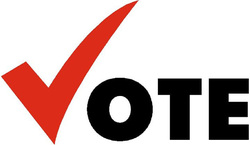Elections

Canada is a very stable democracy. This means that elections are free and fair and political opposition through multiple competing parties is encouraged.
Canada holds elections for its many levels of government: national, provincial and territorial, and municipal. Here we will focus on national elections.
Canada's parliament has 2 chambers. The House of Commons is representative of 308 members who are elected based on a single seat constituency for a 5 year term. The Senate has 105 members, all of whom are appointed by the Governor General on the advice of the Prime Minister.
Under the Plurality Voting System, citizens vote for their local Member of Parliament who is a member of a political party and sits in the House of Commons. The leader of the party with the most seats in the House of Commons becomes the Prime Minister.
Canada holds elections for its many levels of government: national, provincial and territorial, and municipal. Here we will focus on national elections.
Canada's parliament has 2 chambers. The House of Commons is representative of 308 members who are elected based on a single seat constituency for a 5 year term. The Senate has 105 members, all of whom are appointed by the Governor General on the advice of the Prime Minister.
Under the Plurality Voting System, citizens vote for their local Member of Parliament who is a member of a political party and sits in the House of Commons. The leader of the party with the most seats in the House of Commons becomes the Prime Minister.
Although there are always several parties represented in Parliament, Canada's 2 dominant political parties are the Liberals and the Conservatives
LIBERAL PARTY

The Liberals are the oldest federally registered party in Canada, and as a result they have controlled Canadian politics for much of the country's history.
Liberalism is associated with the left on the political spectrum.
Historically, Canada has had 2 distinct "liberal" phases. Before the 1960's politics were defined by a classical liberalism in that individual liberty, representative government, and free markets were highly valued. Subsequently, this ideology was transformed into social liberalism, namely liberal democracy, social justice, the third way, multiculturalism, and diplomacy.
Liberalism is associated with the left on the political spectrum.
Historically, Canada has had 2 distinct "liberal" phases. Before the 1960's politics were defined by a classical liberalism in that individual liberty, representative government, and free markets were highly valued. Subsequently, this ideology was transformed into social liberalism, namely liberal democracy, social justice, the third way, multiculturalism, and diplomacy.
CONSERVATIVE PARTY

The Conservative Party of Canada was formed by the merge of the Canadian Alliance and the Progressive Conservative Party of Canada in 2003.
The Canadian Alliance was a short-run political party, only active from 2000-2003 as it was a successor to the Reform Party of Canada.
The Progressive Conservative Party of Canada originated out of the Conservative Party all the way back in 1867. The Conservative Party changed its name in 1942 to the Progressive Conservative Party of Canada.
The Conservative party is positioned on the right of the political spectrum, although the party has generally identified itself as being center-right, ideologically. Our current Canadian Prime Minister, Stephen Harper, is the Conservative party leader.
The Canadian Alliance was a short-run political party, only active from 2000-2003 as it was a successor to the Reform Party of Canada.
The Progressive Conservative Party of Canada originated out of the Conservative Party all the way back in 1867. The Conservative Party changed its name in 1942 to the Progressive Conservative Party of Canada.
The Conservative party is positioned on the right of the political spectrum, although the party has generally identified itself as being center-right, ideologically. Our current Canadian Prime Minister, Stephen Harper, is the Conservative party leader.
GREEN PARTY

The Green Party of Canada was founded in 1983. The Green's advocate a broad, multi-issue political platform, however, its main values represent ecology, social justice, and grassroots democracy and non-violence.
* Voter turnout has been decreasing over time. Currently only about 60% of Canadians turn in a ballot. As students, it is our responsibility to turn this statistic around. Hopefully you'll have learnt a little bit about each of Canada's major political parties after reading this webpage, so that in the next election your vote will make a difference!

